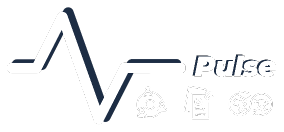Striving for Gender Equity in the Decade of Delivery
10 March 2020

To celebrate International Women’s Day 2020, we hear from Jessica Fraser, Grants Officer at THET, on what more needs to be done to achieve gender equity in health and how THET is contributing to this in the Decade of Delivery.
Gender equity needs to be strived for on all levels. The Sustainable Development Goals (SDGs), with the target of 2030, will not be reached unless we overcome gender inequity in health.
In 2020, we are still seeing an imbalance in women receiving adequate healthcare, taking part in health-related decisions, and holding leadership positions in the health workforce, and more widely across global health organisations. Entering into this new decade, we are now in a unique position to look back over the last 25 years at significant decisions made towards gender equity, such as: the creation of UN Women (2010), the UN Security Council Resolution on Women, Peace and Security (2000), and the Beijing Declaration and Platform for Action (1995), and assess the progress made and the areas in which progress is still needed.
Of particular interest to THET is gender equity in global health interventions. Projects and programmes continue to lack a gender analysis needed to effectively research and deliver interventions which meet women’s needs globally. In many cases, the scientific innovation is present but there is little consideration of the socio-economic factors which create barriers for women to receive, engage with, and benefit from public health interventions. These barriers need to not only be identified but also taken seriously by the global health community. Responses to this may include increased awareness and funding, engagement with policy development, and involving more women in decision-making positions.
Research is not new to highlighting the need for involving more women in decision-making on global health. In recent years, energy has been put into raising awareness of gender inequalities, advocating for equal rights and opportunities, and highlighting the challenges women face every day. These have been particularly apparent through global conferences and events.
However, when it comes to quantifiable shifts in representation and leadership in global health, we still have a long way to go. A report by the Lancet (2019) on the World Health Summit in 2018, for example, shows that only ‘19% of general sessions and 8% of plenary sessions achieved gender parity in speakers, and only 25% of session chairs were women.’[1]
Against this background, we must continue to ask ourselves: how can we, in practical terms, reach more women, develop more effective ways to treat conditions affecting women, and ensure that women are the leading force driving this forward? As progress over the last 25 years is assessed, it becomes clear that ‘efforts towards gender equality for improving health must be explicitly feminist, intersectional, and global, with an emphasis on structural and institutional level change.’[2]
To that end, THET is working to incorporate gender analysis in our work, our organisation, and our vision, by developing and implementing a gender toolkit and taskforce.
Our Gender Equality Toolkit has been produced to support Health Partnerships to address issues of gender inequality in their work. We encourage Health Partnerships to integrate gender equality considerations into all elements of their work, including in needs assessments, project and partnership design, recruitment of team members, project implementation and monitoring and evaluation. In this toolkit, we have identified some entry points that should be considered in order to achieve best practice in gender equality.
THET’s Gender Equality Taskforce is responsible for mainstreaming gender equality across all of THET’s internal and external programmes, projects and day-to-day functions. To do this, the taskforce is working to increase organisational understanding of gender equality and related themes, integrate gender equality into our Principles of Partnership, ensure gender balance in THET’s events and much more! Keep an eye out on our social media platforms for more updates from the taskforce.
[1] Lancet. 2020: a critical year for women, gender equity, and health., The Lancet, 395: 10217, P1, JANUARY 04, 2020., DOI: 10.1016/S0140-6736(19)33170-8. Available at: https://www.thelancet.com/journals/lancet/article/PIIS0140-6736(19)33170-8/fulltext#articleInformation.
[2] Schroeder, E., Rochford, C., Voss, M., Gabrysch, S. Beyond representation: women at global health conference., The Lancet, 393: 10177, P1200-1201, MARCH 23, 2019. DOI:10.1016/S0140-6736(18)32854-X. Available at: https://www.thelancet.com/journals/lancet/article/PIIS0140-6736(18)32854-X/fulltext.


2 Comments
Leave a comment
Your email address will not be published.